#Trinidad flag
Explore tagged Tumblr posts
Text
3 notes
·
View notes
Text
No. 25 - BWIA

@international-nerd asked me to discuss BWIA! I was very excited about this request when I first read it, and now I'm very excited while I write this. BWIA's 2000s livery, which is what I'll be focusing on here, is one that definitely stood out on the tarmac.

It's rare that I can emphatically say this about an airline livery, but it's sort of in a category of its own. If more carriers approached livery design like BWIA, I probably wouldn't have been frustrated enough with the state of things to make this blog in the first place, because their livery is the polar opposite of the timid, corporate, and generic design we expect from airlines.

I like this picture a lot because it looks like she's saying hello to you. Like a cat approaching to sniff your hand.
First taking to the air in 1940 under the name British West Indian Airways, BWIA was also known at various points as BWIA West Indies Airways, BWIA International Airways, or 'Bee-Wee'. Its website was bwee.com. I have begun saying 'bweeeeee......' to myself under my breath now whenever I'm alone.
BWIA was founded as a private company, then became a BOAC subsidiary, and then was rapidly acquired by the government of Trinidad and Tobago. From 1961 until its ultimate demise in 2006, BWIA was the flag carrier of Trinidad and Tobago and became the largest carrier in the Caribbean, serving destinations in North America, South America, the Caribbean, and Europe.

Back in the day they had this...boring standard thing, but by the 80s they expanded their horizons to the other half of the color wheel, picking up a recognizable teal-and-bright-yellow color scheme. Its various jets continued to wear this livery until around 2000.
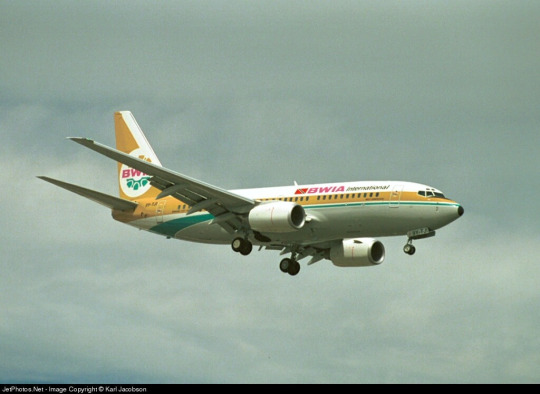

Sure, one image could have sufficed, but I'm far too weak to resist the allure of putting a really cobby-looking plane next to a comically long-looking plane.
The yellow and teal was a step in the right direction, but in 2000 BWIA decided it was time to unleash their true power on airports across the world. And the result is the subject of this post.

Now there's a livery worth talking about.
Seeing images of this livery makes me feel temporally strange. This is an airline which I technically overlapped with, in the sense that I was alive while BWIA existed, but I'm just inherently too young to remember that. There's definitely a chance I saw one of these striking planes in person and just don't remember it because I was five or so years old, and that's a very strange thought. I wish I had managed to see one, and had held onto the memory somehow, because I love these planes.
Do I miss the hot pink lettering from the previous livery? Yes, a little bit. I won't deny that. But if I hadn't known it was there I wouldn't have had that thought, so I don't think that's anything to hold against them.

I think BWIA is a really good place to pick up after this week's first post, Icelandair, where I discussed flag carriers' branding and the fact that it should reflect the country it represents. Trinidad and Tobago's contributions to music are gigantic. It's the birthplace of calypso, though calypso is far from the only genre and far from the only tradition which originated there.
BWIA's logo is a stylized steelpan, a musical instrument invented in Trinidad and Tobago which I could talk about on its own for quite some time if I weren't insisting to myself that this post has to be about airplanes and not music, but it's a choice of logo that makes it immediately clear that this is an airline which represents a group of people rather than just a flag. If the culmination of a flag carrier's mission is to make a case for why it's flying to a place you should visit, this is an incredibly effective way to do that. Trinidad and Tobago is a place where music is born. It's not just islands with beaches, it's islands with people and if you go there you will have experiences you could never have anywhere else.
In terms of flag carrier logos, it's up there among my favorites. The older 2D version is a little harder to immediately identify as a steelpan but the 2000-onward 3D version is very clean and very uniquely BWIA's. It adds more detail but it never becomes cluttered. The steelpan shape and the teal-and-yellow colors are both distinctive on their own, and combined they make planes that are impossible to mistake for any other airline.
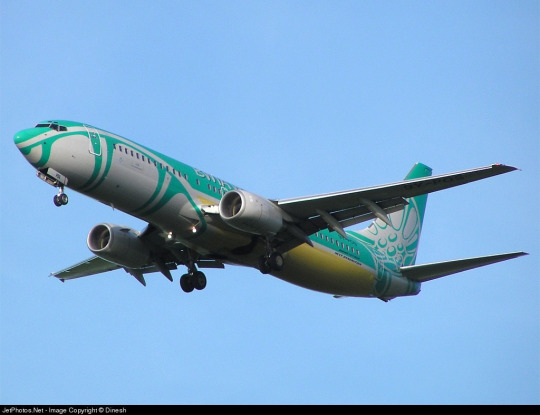
The steelpan logo is prominent both on the tail and wrapped around the bottom of the fuselage, starting about midway down the ventral fairing and ending just below the nose. I really admire BWIA's choice to go with white-on-blue rather than the blue-on-white any other airline would have chosen. It instantly elevates the livery from doing something interesting with the placement of its shapes to doing that and also stubbornly refusing to even approach Eurowhite.

The use of white where it is used is very nicely executed, though. It allows the overall design to maintain a lightness by avoiding black outlines, while preventing the sort of overt eyestrain that comes from putting yellow directly on this sort of light teal. Instead, it elegantly uses the yellow as an accent on the back half of the fuselage. It's difficult for me to even articulate why this works so well, but it just does. The colors look harmonious together despite never mixing, and it's not the sort of place a secondary color would normally be isolated, which I think might be why it's so brilliant. It's a really nice accent to the rest of the plane, preventing the flatness which could result from a livery made entirely of a light color and plain white, while not impinging on the steelpan logo. It draws the eye and then takes a step back to let it experience the rest of the plane, and when you take a step back and appreciate the livery as a single unit it prevents any of that detail from being lost in a blue-and-white blur.
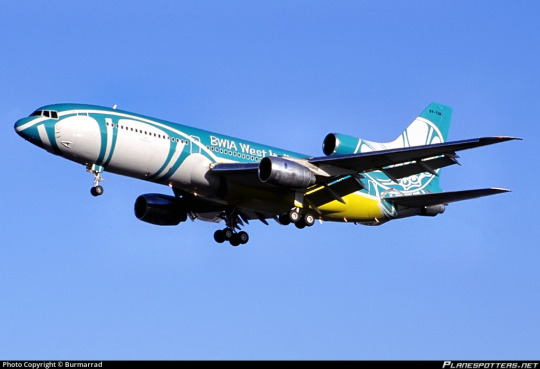

As with many liveries, I think BWIA's looks its best on a TriStar. That might be because the larger empennage lets you see more of the steelpan logo, but there's something so nice about the way the yellow peeks out from under the wing that reminds me of birds with bright yellow underbellies.
I think the main thing that sticks with me after looking at BWIA planes from every angle I can find images for is that this livery exemplifies a style of design that is the exact opposite of what makes most liveries so disappointing. This feels like a livery designed by someone who had never seen another airline livery before, who was sat down with some pencils, a color scheme, a logo, and an identity, and told to find a way to reflect it in the shape of the airplane. In so many of my other posts I compare liveries to each other, with the worst cases merging into uninspiring slop of aughts Delta clones and late 2010s Lufthansa clones and so forth. BWIA just didn't participate in any of that. This livery is hard to put words to because it's nearly impossible to compare to any other livery - in a good way. Most airlines' special occasion liveries don't have a fraction of this excitement.

This might sound a little lofty, and I don't mean to say that BWIA is what airlines should strive to directly emulate (in fact, by doing so they would sort of be doing the opposite of what BWIA did when they released this into a world full of Air France and United), but BWIA here has done what general relativity did to physics. Not so much a different equation, but a different state of mind. Taking what has always been treated as numbers and saying that it makes a lot more sense to think of it as fabric. And what I ultimately think is the most important outcome of these choices is that I can imagine any number of people watching other planes on the tarmac, bored out of their minds, snap out of their stupor to get a closer look when they see a BWIA plane roll by.
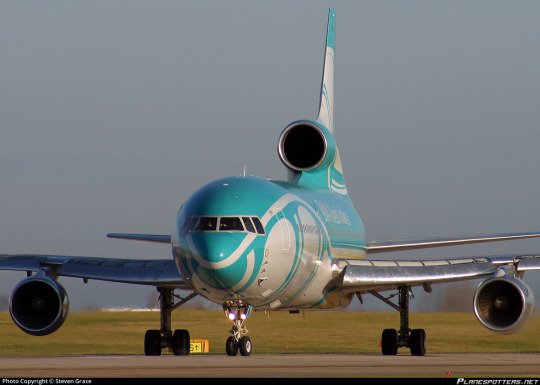
We unfortunately lost BWIA in 2006. It was for regular boring financial reasons, a similar situation to the more recent death of Alitalia where the government simply can't keep pumping money into something which has never turned a profit and has to start over with a new airline. I'm not going to talk about its successor, Caribbean Airlines, except to say that obviously I think it's a gigantic downgrade. Frankly, I could really like Caribbean Airlines and it wouldn't matter. If an impeccably designed livery is equivalent to someone who can answer any question you have about the body of physics scholarship, BWIA is equivalent to the sort of theorist who gets fundamental laws named for them.
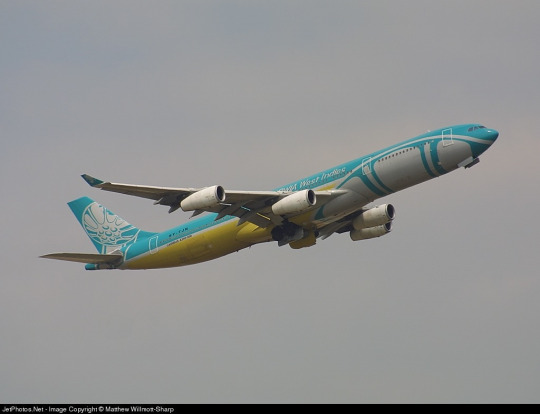
A+, and goodnight.
#tarmac fashion week#grade: a+#era: 2000s#region: caribbean#region: trinidad and tobago#bwia#flag carriers#defunct airlines
48 notes
·
View notes
Text
PROJECT: The Flags Of The World, #13 Trinidad And Tobago ...

The source code of this interesting challenge ...
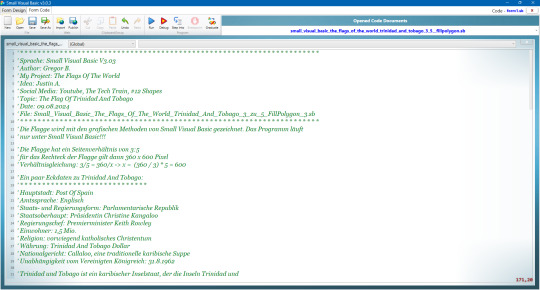

The flag is not spectacular, but it was not easy to program it, because it also requires the appropriate graphical methods.
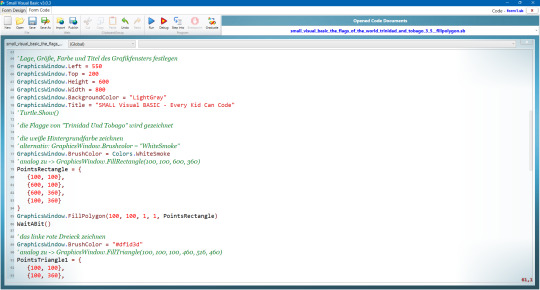
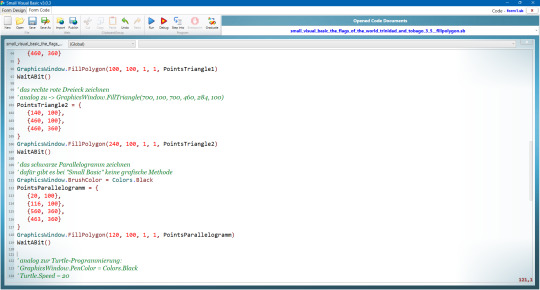
With "Small Basic" you can draw triangles, rectangles, circles and ellipses, but you cannot draw parallelograms, neither linearly nor in solid color. But the programming language "Small Visual Basic" has many more graphical methods.


"Small Visual Basic" offers the built-in method "FillPolygon()", with which you can draw a wide variety of polygons and also draw them in solid colors, including parallelograms. This source code shows the use of this graphical method "FillPolygon()".
Post: #233: Long-term Project: The Flags Of The World, #13 Trinidad And Tobago, 2024.
#programming#coding#programmieren#small basic#education#coding for kids#basic for ever#basic programming#i love small visual basic#mohammad hamdy ghanem#small visual basic#svb#flags of the world#trinidad and tobago
3 notes
·
View notes
Text
Trinidad and Tobago

Good
2 notes
·
View notes
Text

#Trinidad and Tobago wooden flag#4k#wooden grunge flags#North American countries#flag of Trinidad and Tobago#Day of Trinidad and Tobago#North America#Trinidad and Tobago#Trinidad and Tobago flag#wallpapers
0 notes
Text
of course the people who have the cybertruck are the neighborhood maga republicans

#cyber“truck”#i hate elon so much#ew stinky trump supporters#it's so fugly#🤢🤮#they had the Trump 2025 flag in place of the American flag during the election#it's giving cult#maybe my dual citizenship will finally get used#I don't mind moving to trinidad
0 notes
Text

Independence day for Trinidad is August 31st.
1 note
·
View note
Text

Galleryyuhself - Today on GOOGLE
#galleryyuhself/google#galleryyuhself/Trinidad and Tobago Independence#galleryyuhself/celebration#galleryyuhself/red#white and black#tumblr/Trinidad and Tobago flag#tumblr/Trinidad and Tobago Independence#google#independence day#1962-2023
0 notes
Text

Mourning Ring for Vice-Admiral Sir Samuel Cornish, 1770
Amethyst, diamonds, gold and enamel. Bezel set with a faceted amethyst encircled by diamonds in a closed setting, the shank set with black enamel decoration around the inscription ‘Sir Sam. Cornish … 30 Oct 1770 AE 56’.
Sir Samuel Cornish is remembered for the Capture of Manila in 1762 during the Seven Years War - the conflict that found Britain competing with France and her allies around the globe. For nearly 200 years Manila had been at the centre of the imperial Spain’s galleon trade with Acapulco, trading Mexican silver for Chinese silk, porcelain and spices. After Spain allied herself with France in 1762, the British government approved plans to attack Havana and Manila.
Samuel Cornish was appointed to the command of the naval forces bound for Manila comprising 12 ships-of-the-line, 3 frigates and 4 store ships, with his flag in HMS Norfolk. Brigadier-General William Draper commanded land forces of 6,839 soldiers, sailors and marines. By posting a frigate in the Strait of Malacca, Cornish ensured that no news of the impending strike reached Manila prior to the fleet's arrival on 23 September 1762. The city walls were breached on 5 October and on the following day the place was taken by storm. Draper did his utmost to put a stop to the rape and plunder of the town, and with Cornish agreed to accept a ransom of 4 million dollars from the Spanish acting Governor-General Archbishop Manuel Rojo del Rio y Vieyra.
The British occupation of Manila lasted 18 months until the city was returned to Spain under the 1763 Treaty of Paris.During their time in the Philippines, the British found themselves confined to Manila and Cavite, but were rewarded with the capture of the treasure ships Filipina and Santísima Trinidad. These captures made Draper and Cornish wealthy men to the extent that they could retire on the prize money. Both were thanked in Parliament, and Cornish received a Baronetcy.
Sir Samuel Cornish (c1715-1770) was believed at one time to have risen from modest origins, and to have served his apprenticeship on a collier before being appointed to an East Indiaman, but it has been suggested these details relate to his father. Cornish is known to have entered the navy as a volunteer ‘per order’ in 1728. He was commissioned lieutenant in the Litchfield on 12 November 1739, and on 11 November 1740 he moved, with Captain Charles Knowles, to HMS Weymouth, in which he served in the ill-conducted combined operation at Cartagena during March and April 1741. On his return to England he was appointed to command the bomb-ketch Mortar; and on 12 March 1742 he was posted flag captain of the old HMS Namur, flagship of Admiral Matthews in the Mediterranean. In 1742 Cornish was appointed to command the Guernsey (50); and continued in her until the end of the ‘War of Jenkin’s Ear’, doing occasional good service in the destruction of Spanish privateers.
During the war of the Austrian Succession, he was present at the Battle of Toulon which saw the British lose control of the waters around Italy and Spain take the offensive against Savoy. Matthews was dismissed from the navy along with seven captains for lacking offensive spirit. Cornish’s part occasioned no comment, which must be considered an achievement in the light of the number of careers destroyed. On 9 March 1749, as a 'gentleman well skilled in mathematicks and natural knowledge', Cornish was elected to the Royal Society. In 1755 he commissioned HMS Stirling Castle for service in the channel, and in 1758 he was transferred to the Union (90 guns), and was ordered by Lord Anson to wear a distinguishing pennant.
On 14 February 1759 Cornish was promoted Rear-Admiral of the White, and sent out to the East Indies with a small squadron to reinforce Vice-Admiral George Pocock, and undertook operations to clear the coast of Coromandel, which established his reputation as a commander able to co-operate effectively with the army. He succeeded to the command of the East Indies station in 1761, but became embroiled in a dispute with the East India Company over the plunder taken from the French at Pondicherry. Nevertheless his professional competence in combined operations won him the command of the Manila expedition.
Cornish returned to Europe with a comfortable income from prize money. In 1765 he purchased the manors of Sharnbrook, Tafte, and Temple Hills in Bedford. The Duke of Norfolk supported his election as MP for Shoreham, a seat he held from December 1765 until his death, and on 9 January 1766 he was created a baronet, taking his style as Sir Samuel Cornish of Sharnbrook. About this time he married Susan, daughter of James Gambier of Holborn and sister of Admiral James Gambier; they had no children. Cornish died on 30 October 1770, whereupon his title became extinct and his estate passed to his nephew, Samuel Pitchford, captain in the navy, who took the name Cornish.
55 notes
·
View notes
Text
I've been trying to learn the world flags so I can identify them (for funsies) and I'm going by continent, starting with America because I am here 🇸🇻 💙
(Putting this under a readmore because longish post about thing that's probably not v interesting so I dont wanna be too annoying BUT. I wanna talk abt it a little anywayz sooo)
It's been SOOO fun, it's really exciting to see a random flag somewhere and to know whose flag it is : -D I passed by a travel agency poster thing with a bunch of South American and Caribbean flags and ahcdbjncd it feels so nice to know things
(only thing is that I've been pronouncing every country name in spanish, which would be correct for most of South America but like. not All of it, I'm sorry Suriname I didnt know the E is silent.. also 4 the Caribbean islands srry 4 pronouncing it Hamáica and Ay-tee(Haití) sobS)
I've been ignoring the USA and Canada flags completely, so a funny side effect of tht is I've been grouping up flags in categories where those 2 would fit, but I only notice a while after hbjnHBN
I was thinking "Out of the America flags, I can only think of 2 that are a vertical tricolor flag with white on the middle and red in one (or 2) of the sides.. Mexico 🇲🇽 and Perú 🇵🇪 😁" .. I forgor canada exists
And I was thinking "Oh there's SO many flags with the france colors here, there's Costa Rica 🇨🇷, Panamá 🇵🇦, República Dominicana 🇩🇴, Chile 🇨🇱, Cuba 🇨🇺, Puerto Rico 🇵🇷, Paraguay 🇵🇾, and Belice 🇧🇿 technically 😁, so many stars too" .. I forgor abt USA
Thinking also of the few flags that are a tricolor flag with white on the middle and blue on the sides,, El Salvador 🇸🇻 mi amor mi cielo mi vida she's in there with Guatemala 🇬🇹, Honduras 🇭🇳, Nicaragua 🇳🇮 and Argentina 🇦🇷
I'm excited to learn the rest of the flags of the other continents and see which ones I like the most, atm my favorites are El Salvador 🇸🇻(which will never change because I'm VERY biased) Bahamas 🇧🇸 and Trinidad and Tobago 🇹🇹, they look SO nice.. I'm excited to get to Africa, Botswana's flag 🇧🇼 looks super nice too.
(Hope the emojis aren't annoying, I included them so you don't have to google them)
Anytime I start even Thinking about flags, I inevitably spend at least an hour looking at them and I open a Million wikipedia and googleimages tabs about it.. I think it's been like 2 hours since I started typing this because I kept getting distracted with that.
I love any chance I get to talk about flags : -]
#personal#learning is SO hard; maybe tht's why I'm so proud of this.. I think it's been fun and not torture to learn these bc it's pictures#I just need to put the right image and the right name together#and learning things visually might be easier to do? idk. it's been a while since I've learnt something successfully; so Im rly happy
43 notes
·
View notes
Note
here, take this 🇹🇹
Is this the flag of Trinidad and Tobago…?
#shadow blogging#ask blog#shadow the hedgehog#sonic the hedgehog#shadow#shadow the ultimate lifeform#sonic#rp blog#sonic rp#the ultimate life form
9 notes
·
View notes
Note
Fellow flag lover? Do you have any favorites?
EEEK I have so many favorites, putting them all below :3
Tumblr only allows 10 photos at once (lame) so I made collages and put them together randomly to show my favorites (I’m such a nerd about this). Most are country flags, some are territories/U.S state flags/pride flags
Argentina, Seychelles, Estonia, South Africa, Bahamas, Botswana

Sierra Leone, Malaysia, Uruguay, Saint Lucia, Albania, Germany (not necessarily a favorite design wise, but I’ve had an unexplainable fascination with Germany since I was a child so it’s a fav by default)

Trinidad and Tobago, Kazakhstan, Saudi Arabia, Faroe Islands, Cyprus (shoutout lem lol), Greece

South Carolina, Alaska (shoutout May hehe), New Mexico, Lesbian pride (shoutout me😭), Asexual pride, and the Gilbert Baker pride flag

#I enjoyed this heavily thank you anon#another special interest on the unrelated special interest blog :D#vexillology#gunnrblze rambles
15 notes
·
View notes
Text

#2025 Trinidad and Tobago#white background#Trinidad and Tobago#minimal art#2025 Trinidad and Tobago concepts#Trinidad and Tobago 2025#flag of Trinidad and Tobago#2025 Trinidad and Tobago background#Trinidad and Tobago flag#wallpapers
0 notes
Text
*Apologies for initially forgetting Palestine and Puerto Rico. The website I am using may not be that credible after all. I meant no disrespect to either countries
6 notes
·
View notes
Text
Translation/transcript:
Have you ever wondered what interest the UK has in occupying two islands that are 12 thousand kilometers away, over 191 years?
(Text over the image within the dark blue square: The forceful takeover of the Malvinas in 1833 wasn’t an isolated event: it answered to a policy that sought to ensure the influence of the United Kingdom on the American continent.)
The colonization of the Islas Malvinas (Falkland Islands) reveals some of the motives of the colonization that began in January 3, 1833:
Around 1 thousand kilometers away, down south, is Antarctica, territory over which the UK maintains sovereignty claims that overlap with Argentina’s and Chile’s.
(Antarctica has 70% of the world’s fresh water reserves, plus large quantities of minerals and hydrocarbons.)
To the East is the Atlantic Ocean, where the UK also has control over the Georgias Islands and Sandwich Island, Tristan da Cunha, Santa Elena and Ascensión—where the UK has an air base.
(Text within the dark blue square: the Atlantic is the most traveled ocean in the planet and brings 1.5 billion of dollars per year to the global economy.
The UK owns a chain of islands that surrounds South America: The Georgias Islands, Sandwich Island, Tristan da Cunha, Santa Elena and Ascensión.
The air base in the Ascensión Island is used together by the UK and USA.)
To the West, there’s the uninhabited Patagonia and the passages of Drake, Beagle and Magallanes, the only pathways that connect the Pacific with the Atlantic ocean beyond the Panamá canal.
(In the Pacific Ocean, the UK owns the Pitcairn Islands since 1838.)
Up North there’s South America with its invaluable riches, and the Caribbean islands that are part of the British crown, plus the tail end of the Cuenca del Plata—through which millions of tons of food are transported to the rest of the world.
(British colonies: British Virgin Islands, the Turcas and Caicos, the Bermudas, Caiman, Montserrat and Anguilla.
Members of the British commonwealth: Guyana, Barbados, Dominica, and Trinidad y Tobago.
Members of the British commonwealth that recognize UK’s monarchy as the supreme authority: Antigua y Barbuda, San Vicente and the Granadinas, Belice, Canada, Granada, Bahamas, Jamaica, Santa Lucia and San Cristóbal and Nieves.
Free sailing/travel through the Cuenca del Plata was always of interest to the UK, which culminated in the War of Parana in 1845-1850.)
Having control over the islands means having control over an enormous maritime surface, with control of maritime traffic and exploitation of fishing and hydrocarbon resources.
(The sovereignty of the Islas Malvinas also includes Islas Georgias and Sandwich del Sur, plus the maritime spaces around them, which in total constitute a surface of 2.600.000 km².
-The fishing industry in Islas Malvinas extracted 26 thousand millions of dollars in the last 40 years.
-It’s foreseen that in 2025 the oil exploitation will start in the islands.)
Maybe all of that explains why the Islas Malvinas are one of the most heavily militarized territories in the world, where the biggest military base of the southern hemisphere operates.
(The military, missile, naval and air base “Monte Agradable” is located 700km away from continental Antartida.
With around 1500 soldiers over a population of 3000 people total, the Islas Malvinas is one of the most militarized territories in the planet.)
Despite all the protests and arguments from Argentina, the UK maintains ownership of the islands for 191 years, violating the territorial integrity and Argentina’s maritime and bicontinental integrity.
Until our flag (Argentina’s) flies over the islands again, we must continue to denounce that the Islas Malvinas are and will be Argentina’s, always.
[ SOURCE ]
#argentina#islas malvinas#malvinas argentinas#colonization#colonialism#uk#the uk#history#politics#argentina politics#blob post
39 notes
·
View notes
Text


Flag Wars Bonus Round
6 notes
·
View notes